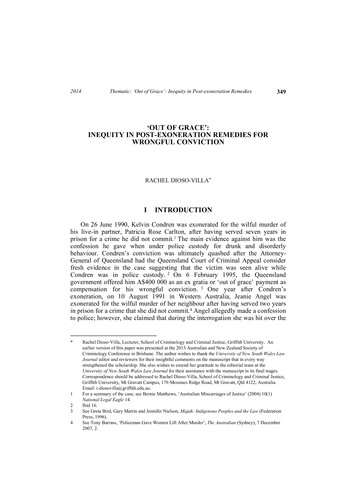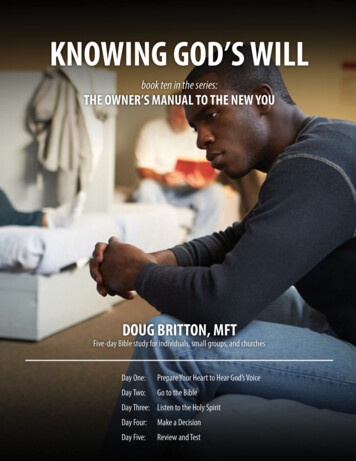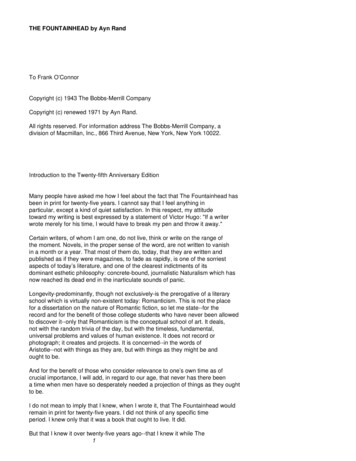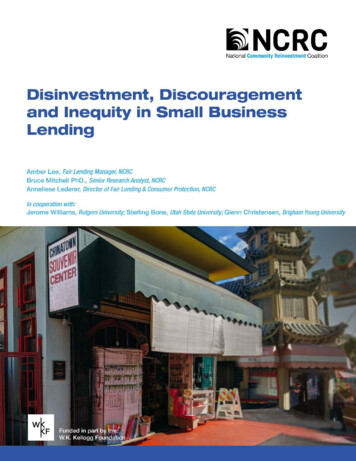
Transcription
NCRCRESEARCHDisinvestment, Discouragement and Inequity in Small Business LendingABOUT NCRCNCRC and its grassroots member organizations create opportunities for peopleto build wealth. We work with community leaders, policymakers and financialinstitutions to champion fairness in banking, housing and business.Our members include community reinvestment organizations, communitydevelopment corporations, local and state government agencies, faith-basedinstitutions, community organizing and civil rights groups, minority and womenowned business associations, and social service providers from across the nation.For more information about NCRC’s work, please contact:John TaylorFounder and Presidentjohntaylor@ncrc.org(202) 688-8866Dedrick Asante-MuhammadChief of Race, Wealth and Communitydasantemuhammad@ncrc.org202-464-2729Jesse Van TolChief Executive Officerjvantol@ncrc.org(202) 464-2709Andrew NachisonChief Communiations & Marketing Officeranachison@ncrc.org202-524-4880ABOUT WKKFThe W.K. Kellogg Foundation (WKKF), founded in 1930 as an independent, privatefoundation by breakfast entrepreneur and innovator, Will Keith Kellogg, is among thelargest philanthropic foundations in the United States. Guided by the belief that allchildren should have equal opportunities to thrive, WKKF works to create conditionsin resource-denied communities for children can realize their full potential in school,work and life. The Kellogg Foundation is based in Battle Creek, Michigan, and worksthroughout the U.S. and internationally, as well as with sovereign tribes. Specialemphasis is made on priority places where there are high concentrations of poverty,and where children face significant barriers to success. WKKF priority places in theU.S. are in Michigan, Mississippi, New Mexico and New Orleans; and internationally,are in Mexico and Haiti.www.ncrc.org2
NCRCRESEARCHDisinvestment, Discouragement and Inequity in Small Business LendingCONTENTSExecutive Summary4Introduction7Current small business lending data11NCRC research14Mystery shopping28The path forward37www.ncrc.org3
NCRCRESEARCHDisinvestment, Discouragement and Inequity in Small Business LendingEXECUTIVE SUMMARYSmall businesses are vital to the U.S. economy. The nation’s 29.6 million small businessesgenerated over half of U.S. GDP in 2014 while employing nearly half of private-sectoremployees.1 Starting and growing a business isn’t easy, and access to startup, workingand growth capital is a challenge both for entrepreneurs and for the local communities thatbenefit when small businesses succeed.While the term “startup” may suggest Silicon Valley and the pursuit of tremendous growthwith investment from venture capitalists, most small businesses don’t fit or pursue thatmodel. Instead, the majority of startup small businesses are involved in providing servicesand rely on the personal savings of the founders and their family. In 2015, startups reliedon bank loans 8% and business credit cards 2% of the time. And while 57% of smallbusinesses did not expand, 22% expanded with personal and family savings, while ventureand angel capital accounted for less than 2% of financing.2 Bank loans and business creditcards are more common sources of financing than venture capital, providing 5% and 2% ofcapital for established and expanding small businesses.Banks play an important role in financing small business growth, yet the data on banklending is limited. In 1977, the Community Reinvestment Act (CRA) required banks to reporton the amount of small business lending to neighborhoods at different income levels incounties across the country. This was done to provide oversight and correct for a history ofdiscriminatory lending practices against low-income and minority neighborhoods, commonlyreferred to as “redlining.” While the CRA small business data provided some insight intolending patterns in low-income areas, it didn’t provide data on the income or minority statusof business owners. The only other publicly available data on small business lending comesfrom the small percentage of business loans backed by the Small Business Administration(SBA) 7(a), which comprises only 3% to 7% of small business loan volumes.3 This lack ofdata cloaks bank small business lending practices, hindering regulators’ and stakeholdersability to monitor and hold banks accountable.To dig deeper, the National Community Reinvestment Coalition (NCRC) took twoapproaches. First, it used publically available data on small business lending to analyzebank lending practices from 2008 to 2016. Then, NCRC used mystery shoppers to examinedifferences in the customer service experiences for potential borrowers of different races inLos Angeles in s/default/files/Finance-FAQ-2016 WEB.pdfConsumer Financial Protection Bureau, Key Dimensions of the Small Business Lending Landscape at 19 (May 2017), https://bit.ly/2Uu7D23www.ncrc.org4
NCRCRESEARCHDisinvestment, Discouragement and Inequity in Small Business LendingThe data and tests revealed a troubling pattern of disinvestment, discouragementand inequitable treatment for black and Hispanic-owned businesses.This study found from 2008 to 2016: There were steep reductions in SBA 7(a) lending to black small business owners. Thisresulted in a decline from about 8% to 3% of loans during the Great Recession, adecline that has yet to recover. Business owners in wealthier areas received the largest share of loans - 85% inMilwaukee. In fact, in six of seven metro areas analyzed, more than 70% of loans wentto middle- and upper-income neighborhoods. The number of bank branch locations declined 10% since 2009, likely affecting smallbusinesses that are highly dependent on local-level banking relationships. Banks have not reinvested the increased capital that they accumulated through depositsafter the end of the Great Recession back into small businesses. The most significantdifference between deposits and loans occurred in New York City metro area, wheredeposits increased by 100%, but lending decreased by nearly 40%. There are tremendous gaps in black and Hispanic business ownership relative to theirpopulation size. Although 12.6% of the U.S. population is black, only 2.1% of smallbusinesses with employees are black-owned. Hispanics are 16.9% of the population yetown only 5.6% of businesses.Mystery shopping tests in 2018 revealed: Bank personnel introduced themselves to white testers 18% more frequently than theydid to black testers. White testers received friendlier service overall. Black and Hispanic testers were requested to provide more information than their whitecounterparts, particularly personal income tax statements where Hispanic testers wereasked to provide them nearly 32% and black testers 28% more frequently than theirwhite counterparts. White testers were given significantly better information about business loan products,particularly information regarding loan fees where white testers were told about what toexpect 44% more frequently than Hispanic testers and 35% more frequently than blacktesters. One area of customer service was significantly better for black and Hispanic testers –they received an offer to schedule an appointment to take their application more often,which happened 18% more frequently for black testers and 12% more often for Hispanictesters.www.ncrc.org5
NCRCRESEARCHDisinvestment, Discouragement and Inequity in Small Business LendingThe analysis of lending practices used data reported by banks from seven U.S. cities:Atlanta, Houston, Los Angeles, Milwaukee, New York, Philadelphia and Washington, D.C.The limited data that banks are required to report on their small business lending show lowlevels of participation in entrepreneurship and lack of access to capital through the traditionalbanking market, especially for black and Hispanic business owners. In all seven cities, nonHispanic white and Asian small business ownership is robust, while black and Hispanic smallbusiness ownership lags in comparison to their share of the population. The racial businessownership divide is particularly pronounced when examining businesses with employees.This indicates that the benefits of small business growth in providing employmentopportunities in minority communities are not being realized.NCRC’s findings show large gaps in black and Hispanic entrepreneurship when comparedwith Asian and white business owners. This gap is one of the fundamental causes ofthe racial wealth divide within the United States. The accessibility of credit is essential toestablish and grow small businesses, yet lending to borrowers located in black and Hispanicneighborhoods severely lags. With the paucity of small business data, it is difficult to assessindividual bank performance in small business lending. Failure to implement Section 1071 ofthe Dodd Frank Wall Street Reform and Consumer Protection Act (Dodd Frank Act) hampersthe ability of regulators and the public to comprehensively understand whether capital isallocated in an equitable way to women-owned and minority-owned small businesses, acritical component to the operation of a modern economy.NCRC’s mystery shopping tests indicated that while the customer service experienceof all applicants for small business credit is poor, it’s even worse for black and Hispanicapplicants. Despite the minority prospective customers’ superior business profiles, they wereasked to provide more documentation and given less information about loan terms thantheir white counterparts. This points to severe gaps in the training provided by banks to theirsmall business lending specialists which can lead to inequities in service to borrowers anddeter minorities from even considering getting a loan from traditional banking sources.www.ncrc.org6
NCRCRESEARCHDisinvestment, Discouragement and Inequity in Small Business LendingINTRODUCTIONWhile many view homeownership as one of the principal ways to build wealth,4 small businessownership can provide opportunities for people to increase their income, independence andultimately their economic freedom. This is especially true for minorities, women and immigrantswho might not otherwise be able to move into the mainstream economy.5 In addition to wealthbuilding, small businesses drive economic growth, create jobs and have the ability to revitalizethe economy.6 From 1992 to 2013, small businesses7 accounted for 63.3% of net new jobs.8In the early 2000s, minority-owned businesses employed more than 4.7 million people withan annual payroll of 115 billion.9 Small businesses increase local employment opportunities,provide goods and services to local residents and generate higher levels of income growthwithin neighborhoods.10Access to responsible, affordable capital is essential for small businesses to operate andexpand. Adequate capital enables owners to hire more workers and make other investmentsto scale-up and improve business operations as demand increases. According to the 2018Small Business Credit Survey, traditional bank lending continues to be the primary source offunding for small businesses.11 In turn, banks rely heavily on small business loans to meet theirobligations under CRA. Sixty-seven percent of small business loans (7.5 million loans valued at 256 billion) qualify for CRA credit (compared to just 12% of single-family mortgage loans).12 Thesteady hikes in interest rates by the Federal Reserve makes small business loans increasinglyprofitable while still enabling banks to offer the lowest interest rates and best term lengths.13Despite their importance in the economy, small businesses, particularly black and Hispanicowned small businesses, face many barriers. This is reflected in lower rates of businessownership among minorities. The last U.S. Census Survey of Business Owners (SBO) showsthat while the black population comprises 12.6% of the total U.S. population, they make up just45678910111213Edward N. Wolff, Has Middle Class Wealth Recovered?, at 28 (Nov. 2017) /paper/5ZFEEf69 accessed May 6, 2019.Woodstock Institute, Patterns of Disparity: Small Business Lending in the Buffalo and New Brunswick Regions, at 1 (April 2017), https://bit.ly/2vlzozP.Archana Pradhan & Josh Silver, National Community Reinvestment Coalition Analysis: Small Business Lending Deserts and Oases, NationalCommunity Reinvestment Coalition at 11 (September 2014), https://bit.ly/2Uw4uhX.A small business is defined as an independent business with fewer than 500 employees (U.S. Small Business Administration 2017).U.S. Small Business Administration (2016), Frequently Asked Questions, accessed April 19, 2019, https://bit.ly/2I9WGBV.Archana Pradhan & Josh Silver, National Community Reinvestment Coalition Analysis: Small Business Lending Deserts and Oases, NationalCommunity Reinvestment Coalition at 13 (September 2014), https://bit.ly/2Uw4uhX.Woodstock Institute, Patterns of Disparity: Small Business Lending in the Buffalo and New Brunswick Regions, at i (April 2017), https://bit.ly/2vlzozP.Federal Reserve Banks, Small Credit Business Credit Survey: Report on Employer Firms at 7 (2019), https://bit.ly/2IJuuEq.Laurie Goodman, et al. Small Business and community development lending are key to CRA compliance for most banks, Urban Wire:Economic Growth and Productivity (Feb. 2019), https://urbn.is/2vlAkUR.Rohit Arora, Four Reasons Why Small Business Lending is Hot, Forbes (May 2018), https://bit.ly/2GAQ3EL.www.ncrc.org7
NCRCRESEARCHDisinvestment, Discouragement and Inequity in Small Business Lending9.5% of all business owners and own just 2.1% of firms with employees.14 This contrasts withthe white non-Hispanic population who comprise 62.8% of the U.S. population, own 70.9%of all businesses and 81.6% of the firms with employees. There is a wide disparity in boththe revenue and size of black and Hispanic-owned businesses when contrasted with othergroups.15 These low rates of business ownership and size, along with other factors, such aslower rates of homeownership, contribute to the widening wealth gap between minority groupsand the white non-Hispanic population.16Current data provide little insight into the small business lending market. Unlike mortgagelending, banks are not required to collect or report comprehensive data on individual businessloans. The only publicly available data with an annual reporting criteria is CRA reporting data,which is aggregated, and data on the small number of loans backed by the SBA. There arelimited data releases made by the SBO and Federal Financial Institutions Examination Council(FFIEC). None of these sources provide comprehensive information about individual loans, totalinvestment or the demographics of borrowers. Congress recognized this problem followingthe 2008 financial crisis with the passage of the Dodd-Frank Act.17 Section 1071 of the DoddFrank Act called for banks to start collecting and reporting on information concerning creditapplications made for small business loans. However, the Consumer Financial ProtectionBureau (CFPB), the agency responsible for implementing these reporting requirements, hasyet to move forward with implementation and does not appear to have any plans to do so inthe near future. Section 1071 would provide valuable insight for understanding this nebulousmarket and enable regulators and stakeholders to hold banks accountable for their smallbusiness lending practices.In addition to the lack of insight into the overall lending market, the experiences of smallbusiness owners who are attempting to access capital in the traditional banking marketplaceare not well known. A 2016 survey by the Federal Reserve Bank18 found that the majorityof small business owners (55% of those surveyed) did not even attempt to apply for credit.One of the leading reasons for this was “discouragement,” meaning they did not apply forfinancing “because they believed they would be turned down.” Another Federal Reserve Bankstudy found that 22.2% of minority neighborhood businesses were discouraged borrowers,compared to 14.8% of businesses from other urban localities.19 The banking experiencematters. When small business owners face poor customer service and lack of information,they turn to alternative sources of funding to grow their businesses. These alternative sources14 United States Census Bureau, Survey of Business Owners (SBO) Survey Results: 2012 con/2012-sbo.html accessed April 19, 2019.15 McManus, M., Minority Business Ownership: Data from the 2012 Survey of Business Owners, U.S. Small Business Administration IssueBrief (Sept. 14, 2016) https://bit.ly/2cXNsWa.16 Lisa Dettling et al., Recent Trends in Wealth-Holding by Race and Ethnicity: Evidence from the Survey of Consumer Finances, Board ofGovernors of the Federal Reserve System, FEDS Notes (Sept. 27, 2017) https://bit.ly/2wmxwp9.17 Pub. L. No. 111-203 § 929-Z, 124 Stat. 1376, 1871 (codified 15 U.S.C. § 78o).18 Federal Reserve Banks, Small Credit Business Credit Survey: Report on Employer Firms at 7 (2016), https://nyfed.org/2oan3s7.19 Ann M. Wiersch et al. Barkley, Click, Submit: New Insights on Online Lender Applicants from the Small Business Credit Survey, FederalReserve Bank of Cleveland (Oct 2016), http://bit.ly/2sYZju2.www.ncrc.org8
NCRCRESEARCHDisinvestment, Discouragement and Inequity in Small Business Lendingof credit, like online lending, could further hinder a small business’s ability to flourish sincealternative sources are often unregulated and could lead to higher interest rates andpredatory loan terms.In this report, NCRC utilized the limited publically available data to conduct a seven-citysurvey in an attempt to get a baseline understanding of how lending institutions are investingin small businesses. The analysis of lending practices used data reported by banks fromAtlanta, Houston, Los Angeles, Milwaukee, New York, Philadelphia and Washington, D.C.Despite the increase in overall deposits throughout the seven cities, the volume and amountof small business loans reported by banks under the CRA stagnated in all but one market,Houston. NCRC also conducted small business lending mystery shopping at bankinginstitutions in Los Angeles to gain a better understanding of the level of customer servicebusiness owners encountered in the traditional lending market.Literature review: Racial bias in the financial marketThe history of racial bias in mortgage and small business lending industry is welldocumented.20 The disparity in financial access is rooted in segregationist and discriminatorypractices such as redlining and steering. This history of discrimination impeded the fulleconomic participation of minorities and served as the motivation for the Fair Housing Act of1968 and for the enactment of CRA in 1977.21Despite efforts to correct disparities in financial access, recent scholarship suggests thatdiscriminatory practices persist among lenders and in some markets. This was the topicof a landmark study by the Federal Reserve Bank of Boston in 1996,22 which examinedwhether there were higher mortgage lending denial rates for black and Hispanic borrowersrelative to white borrowers. Even after considering a wide range of variables associatedwith creditworthiness, black borrowers were still 8% less likely to receive loan approval thanwhite borrowers. These findings were controversial, both in their implications and from amethodological standpoint, and sparked subsequent studies, notably research on smallbusiness lending by Blanchflower et al. (2003).23 The conclusions of that study indicated thatthe high rate of minority denials and high credit costs were attributable to lenders consideringthe personal traits of the potential borrowers, rather than their creditworthiness. This longstanding denial of access to credit has discouraged black business owners from applying forcredit.24 Discouragement suppresses the demand for access to credit markets and masksthe impact of denials by diminishing the number of black-owned business loan applications.In addition to discouragement and diminishing applications, black-owned businesses20 Mehrsa Baradaran, The Color of Money: Black Banks and the Racial Wealth Gap (2017); Richard Rothstein, The Color of Law: AForgotten History of How our Government Segregated America (2017).21 42 U.S.C. ch. 69 § 5301.22 Alicia H. Munnell et al., Mortgage Lending in Boston: Interpreting HMDA Data, American Economic Review vol. 86 no. 1 (March 1996).23 David G. Blanchflower et al., Discrimination in the Small Business Credit Market, Review of Economics and Statistics, vol. 85 (4) (Aug.2002).24 Federal Reserve Banks, Small Credit Business Credit Survey: Report on Employer Firms at 7 (2016), https://nyfed.org/2oan3s7.www.ncrc.org9
NCRCRESEARCHDisinvestment, Discouragement and Inequity in Small Business Lendingface higher rates of denials and pay higher interest rates than white-owned businesses. Astudy by Asiedu (2012) showed higher denial rates for black and female-owned businesses,with increasing rates of denial over the study period from 1998-2003. It also confirmed theBlanchflower et al. study, finding that banks consistently charged these businesses with higherinterest rates.25Cavalluzzo and Wolken (2005)26 studied the role a business owner’s wealth and race playedin small business lending decisions. The study identified substantial differences between racialand ethnic groups. While greater personal wealth, specifically homeownership, was associatedwith a lower probability of denial, even after controlling for wealth, there were differences indenial rates across groups. Cavalluzzo and Wolken concluded, “ information on personalwealth explained some of the differences between Hispanic and Asian-owned business andthose owned by whites, but almost none for African American businesses.” 27 A study by Bates& Robb (2016)28 found that higher rates of rejection and lower loan amounts typified lendingto black and Hispanic-owned minority business enterprises (MBE). This raised the questionof whether a business’s location in a minority neighborhood or owner race was a contributingfactor in loan decision-making. While MBEs are concentrated in minority neighborhoods, whiteowned businesses in minority neighborhoods had significantly higher rates of loan acceptance.The study concluded that greater business-owner wealth, not the location in a minorityneighborhood, opened doors to credit opportunity, while owner race closed them. A furtherstudy by Fairlie, Robb & Robinson (2016) of capital acquisition by start-up small businessesfound that even though differences in creditworthiness were important, after controlling fora diverse set of firm and founder characteristics, there were consistently higher rates of loandenial to black-owned businesses.29 Additionally, in accord with Blanchflower’s 2003 study,much higher levels of owner discouragement were noted among minority business-owners.The literature shows that higher denial rates for black and Hispanic small business loanapplicants are an ongoing issue. However, causality and linkage with discriminatory practicesare more difficult to assess. Several problems impact research in this area, most pronouncedare inadequacies of the currently available datasets. Specifically, the linkage betweenapplicants’ race/ethnicity and credit scoring is difficult to assess.The work undertaken in this report expands upon earlier work by NCRC’s research team, whichculminated in the publication of “Shaping small business lending policy through matched25 Elizabeth Asiedu et al., Access to Credit by Small Businesses: How Relevant Are Race, Ethnicity, and Gender?, American EconomicReview: Papers and Proceedings 102(3): 523-637 (2012).26 Ken Cavalluzzo & John Wolken, Small Business Loan Turndowns, Personal Wealth, and Discrimination, Journal of Business, vol. 78, issue6, 2153-2178 (2005).27 Id. at 2171.28 Timothy Bates & Alicia Robb, Impacts of Owner Race and Geographic Context on Access to Small-Business Financing, EconomicDevelopment Quarterly 30(2) (Dec. 2015).29 Fairlie, Robert, Alicia Robb, and David T. Robinson. “Black and white: Access to capital among minority-owned startups.” Stanford Institutefor Economic Policy Research discussion paper (2016): 17-03.www.ncrc.org10
NCRCRESEARCHDisinvestment, Discouragement and Inequity in Small Business Lendingpair mystery shopping.”30 This paper notes many inadequacies in the current reporting andregulatory frameworks for small business lending. These inadequacies are especially relevantfor minority entrepreneurs, vulnerable groups who have been subject to exploitation anddiscrimination in the financial products marketplace. The earlier study also implemented amystery shopping framework to gather information on discrimination against minority smallbusiness entrepreneurs who sought financing to expand their businesses.CURRENT SMALL BUSINESS LENDING DATA:The proverbial black holeRobust data collection and analysis is vital for any business to succeed. In the lending market,data collection enables better tracking of access to credit, identification of barriers to accessand informs efforts to overcome these barriers. Simply put, better data on lending markets willimprove access to credit.31 Without robust reporting requirements, stakeholders have no meansof holding lenders accountable for meeting the credit needs of the markets they serve. Data isnot just an important tool for advocates and regulators. Data enables lenders to identify missedprofitable opportunities and correct potential costly fair lending violations.The 2008 mortgage crisis perfectly illustrated the need for more insight into the financialindustry’s lending practices. This need was not just for mortgage lending. Congress recognizeda broader need with the passage of Section 1071 of the Dodd-Frank Act.32 Section 1071amended the Equal Credit Opportunity Act (ECOA)33 to require financial institutions to compile,maintain and report information concerning credit applications made by women-ownedand minority-owned small businesses. The purpose of Section 1071 was to “facilitate theenforcement of fair lending laws and enable communities, governmental entities and creditorsto identify business and community development needs and opportunities of women-owned,minority-owned and small businesses.”34These types of reporting requirements were not a new concept. In 1975, Congress implementedthe Home Mortgage Disclosure Act (HMDA),35 recognizing that some financial institutions hadcontributed to the decline of certain neighborhoods by their failure to provide adequate homefinancing to qualified applicants. The banking industry’s history of residential steering, restrictivecovenants and redlining took a huge toll in urban areas.36 HMDA enabled the public to viewbanks’ lending information to determine whether financial institutions were serving the housing30 Sterling A. Bone et al., Policy Watch: Shaping Small Business Lending Policy Through Matched-Pair Mystery Shopping, Journal of PublicPolicy & Marketing 1-9 (2019) https://bit.ly/2QAmNT7.31 Archana Pradhan & Josh Silver, National Community Reinvestment Coalition Analysis: Small Business Lending Deserts and Oases, NationalCommunity Reinvestment Coalition at 11 (September 2014), https://bit.ly/2Uw4uhX.32 Pub. L. No. 111-203 § 929-Z, 124 Stat. 1376, 1871 (codified 15 U.S.C. § 78o).33 15 U.S.C § 1691 et seq.34 15 U.S.C. § 1691c-2(a).35 12 U.S.C. ch. 29 §§ 2801-2811, amended by 12 U.S.C. ch. 3 § 461 et seq.36 Richard Rothstein, The Color of Law: A Forgotten History of how our Government Segregated America (2018).www.ncrc.org11
NCRCRESEARCHDisinvestment, Discouragement and Inequity in Small Business Lendingand credit needs of the communities in which they’re located. HMDA required the collectionand disclosure of data about applicant and borrower characteristics to assist in identifyingpossible discriminatory lending patterns and enforcing anti-discrimination statutes. The goalof Section 1071 is to apply the same type of reporting requirements to small business loans.The Dodd-Frank Act tasked the CFPB with the responsibility of centralizing the collection ofsmall business lending data and making that data public. However, it’s been over eight yearssince the passage of the act, and Section 1071 still has not been implemented. The CFPB’sonly concrete step to move forward with the collection of data required under 1071 was torelease a request for information regarding the small business lending market in the summerof 2017. Over ten years later, it remains on the bureau’s “pre-rule” agenda. It is unclear when,if ever, banks will be held responsible for collecting small business data, and when the publicwill gain insight into this vital aspect of wealth-building in the U.S.Publically available small business lending data: More questions than answersIn its 2017 white paper on the small business lending landscape, the CFPB estimatedthat the total aggregate amount of debt financing available to small businesses wasapproximately 1.4 trillion.37 This included an estimate of all available capital including termloans and lines of credit, supplier financing, equipment leasing, business credit cards, SBAand microloans, factoring and merchant cash advances.Small Business Lending a 1.4 Trillion MarketSBA 7(a), 504,and MicroloansTerm Loans andLines of redit Cards16%21%Supplier FinancingSource: CFPB 2017However, without the implementation of any meaningful, concrete data reportingrequirements for lending institutions, these are just estimates. The CFPB utilized datareleased from the SBA in 2013 and admitted that “currently there is only a very limited abilityto accurately size the small business lending market even by broad product cat
banking market, especially for black and Hispanic business owners. In all seven cities, non-Hispanic white and Asian small business ownership is robust, while black and Hispanic small business ownership lags in comparis
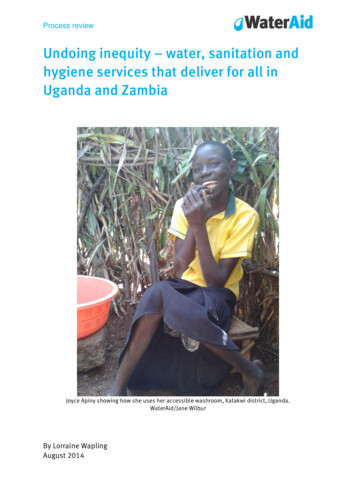


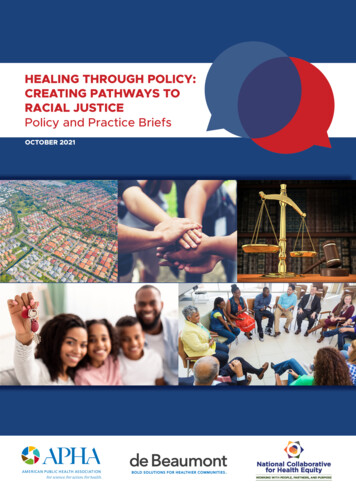

![Radical Healing Syllabus[4] - School of Social Work](/img/36/radical-healing-syllabus-2.jpg)
